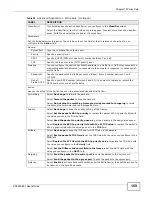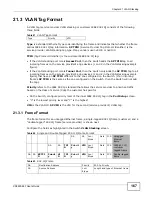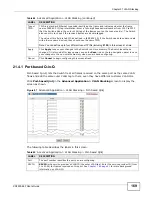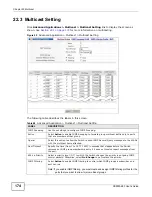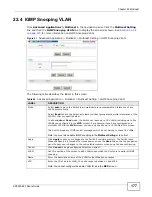
Chapter 21 VLAN Stacking
XS3900-48F User’s Guide
166
adding tag 37 to distinguish customer A and tag 48 to distinguish customer B at edge device 1 and
then stripping those tags at edge device 2 as the data frames leave the network.
Figure 85
VLAN Stacking Example
21.2 VLAN Stacking Port Roles
Each port can have three VLAN stacking “roles”, Normal, Access Port and Tunnel Port (the latter
is for Gigabit ports only).
• Select Normal for “regular” (non-VLAN stacking) IEEE 802.1Q frame switching.
• Select Access Port for ingress ports on the service provider's edge devices (1 and 2 in the VLAN
stacking example figure). The incoming frame is treated as "untagged", so a second VLAN tag
(outer VLAN tag) can be added.
Note: Static VLAN Tx Tagging MUST be disabled on a port where you choose Normal or
Access Port.
• Select Tunnel Port (available for Gigabit ports only) for egress ports at the edge of the service
provider's network. All VLANs belonging to a customer can be aggregated into a single service
provider's VLAN (using the outer VLAN tag defined by the Service Provider’s (SP) VLAN ID
(VID)).
Note: Static VLAN Tx Tagging MUST be enabled on a port where you choose Tunnel
Port.
Summary of Contents for XS-3900-48F
Page 15: ...15 PART I User s Guide ...
Page 16: ...16 ...
Page 48: ...Chapter 2 Tutorials XS3900 48F User s Guide 48 ...
Page 62: ...Chapter 4 The Web Configurator XS3900 48F User s Guide 62 ...
Page 63: ...63 PART II Technical Reference ...
Page 64: ...64 ...
Page 227: ...Chapter 26 VLAN Mapping XS3900 48F User s Guide 227 ...
Page 320: ...Appendix A Common Services XS3900 48F User s Guide 320 ...
Page 332: ...Index XS3900 48F User s Guide 332 ...








